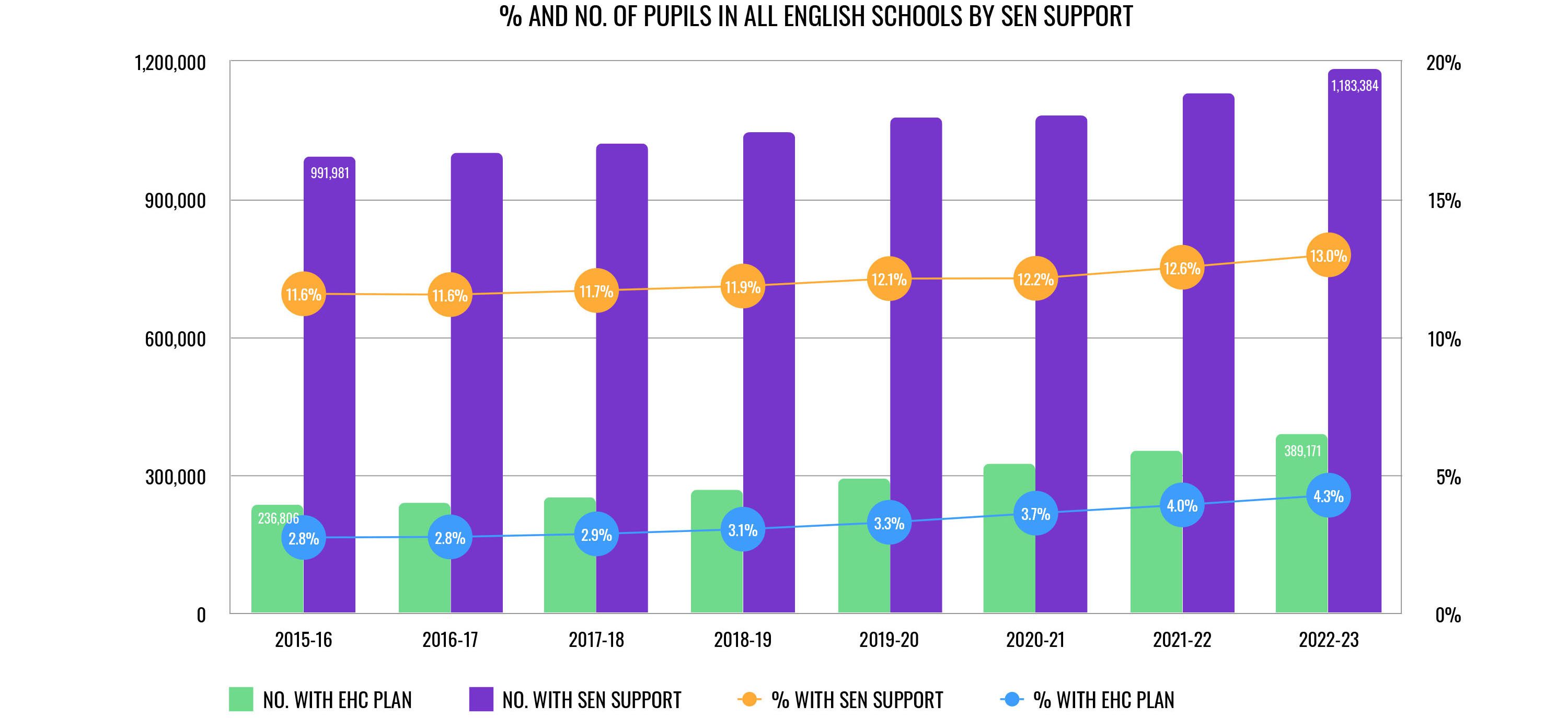
The numbers tell an interesting story when it comes to young people and the support they're getting for their Special Educational Needs (SEN) in schools. From 2016 to 2023, we've seen a gradual increase in the percentage of pupils receiving SEN support. That's noteworthy, but the real eye-opener is the whopping 64% increase in the number of students with an Educational Health Care Plan (EHCP) between 2015/16 and 2022/23. The bulk of this happened after 2019/20, hinting that the pandemic accelerated the trend, and has left a legacy of support needs in English schools.
Now, what's driving these changes is still a bit of a mystery. It could be more funding, allowing schools to conduct better assessments, or perhaps the disruption caused by the pandemic brought hidden needs to the surface. When we dive into the specifics, it's clear that autism is the most prevalent need among those with an EHC Plan. Official government surveys estimate that about 1 in 100 people are autistic, but the real numbers are likely higher.1 Diagnosis data collected from GPs between 1998 and 2018 showed significant increases, especially in 6 to 11-year-olds, adults over 19, and females.2 The count of pupils in English schools with autism as their primary need has surged from 100,801 in 2015/16 to a staggering 206,763 in 2022/23.3 That's quite a jump!
Chart data source:
https://explore-education-statistics.service.gov.uk/data-tables/permalink/77ff0d8d-c385-4ec4-7c4a-08db63adc612
- 1 https://www.autism.org.uk/advice-and-guidance/what-is-autism
- 2 https://onlinelibrary.wiley.com/doi/abs/10.1111/jcpp.13505
- 3 https://explore-education-statistics.service.gov.uk/data-tables/special-educational-needs-in-england/2022-23?subjectId=8853ca31-33aa-46b3-9638-08db70394ab1